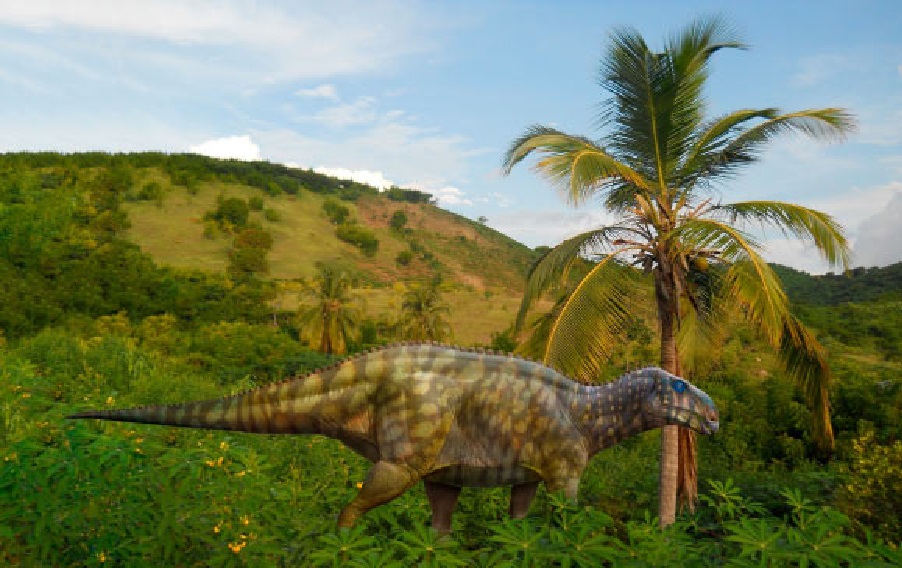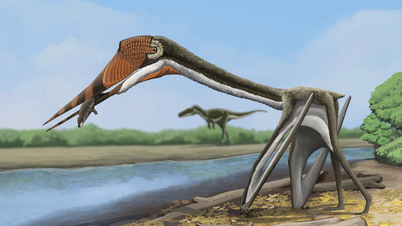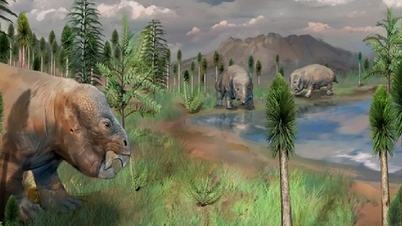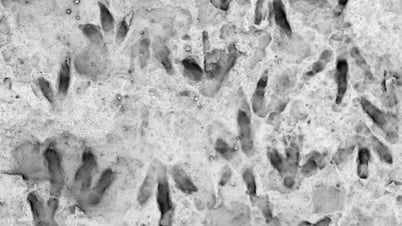(NLDO) - The giant beast Qianjiangsaurus changshengi roamed in southwestern China about 70 million years ago, at the end of the Cretaceous period.
According to Sci-News, in 2022, Chinese paleontologists found fossilized parts of a giant beast in the Zhengyang Formation in Chongqing City.
Although incomplete, the skeleton was enough for a team led by Dr. Hai Xing from the National Museum of Natural History of China, the Nanjing Institute of Geology and Paleontology, and the Canadian Museum of Nature to identify an entirely new species of dinosaur.

Image of new monster species in Chongqing - China recreated by scientists - Photo: Hai Xing/SCI-NEWS
The new species, named Qianjiangsaurus changshengi, is a member of the Hadrosauroidea, a diverse and morphologically rich clade of ornithischian dinosaurs.
Other members of this dinosaur clade have been excavated from sites in Asia, Europe, the Americas, Africa, and even Antarctica.
They formed an important part of the Cretaceous terrestrial ecosystem.
According to the description of the new species in the scientific journal Cretaceous Research, Qianjiangsaurus changshengi was a giant beast with a heavy-looking body and a length of up to 8 meters.
Despite this, it is a docile herbivore. It also bears the distinguishing features of its family, such as a duck-like bill and complex teeth.
Most interestingly, the skeleton of this beast bears many transitional features between two different groups within the Hadrosauroidea family, providing paleontologists with an important piece of the evolutionary puzzle of this lineage.
It also represents the second Hadrosauroid dinosaur discovered in southern China, alongside the previously identified Nanningosaurus dashiensis.
This lineage also helped to link the Zhengyang Formation with the Djadokhta and Baruungoyot Formations in Mongolia, helping paleontologists to determine the dinosaur habitat in Asia during the Cretaceous, also the golden age of the beasts.
Source: https://nld.com.vn/loai-quai-thu-dai-8-m-xuat-hien-o-trung-khanh-trung-quoc-196240904102125628.htm




![[Photo] President Luong Cuong presents the decision to appoint Deputy Head of the Office of the President](https://vphoto.vietnam.vn/thumb/1200x675/vietnam/resource/IMAGE/2025/5/8/501f8ee192f3476ab9f7579c57b423ad)
![[Photo] National Assembly Chairman Tran Thanh Man chairs the meeting of the Subcommittee on Documents of the First National Assembly Party Congress](https://vphoto.vietnam.vn/thumb/1200x675/vietnam/resource/IMAGE/2025/5/8/72b19a73d94a4affab411fd8c87f4f8d)
![[Photo] General Secretary concludes visit to Azerbaijan, departs for visit to Russian Federation](https://vphoto.vietnam.vn/thumb/1200x675/vietnam/resource/IMAGE/2025/5/8/7a135ad280314b66917ad278ce0e26fa)
![[Photo] Prime Minister Pham Minh Chinh meets with the Policy Advisory Council on Private Economic Development](https://vphoto.vietnam.vn/thumb/1200x675/vietnam/resource/IMAGE/2025/5/8/387da60b85cc489ab2aed8442fc3b14a)























































![[Photo] Prime Minister Pham Minh Chinh talks on the phone with Singaporean Prime Minister Lawrence Wong](https://vphoto.vietnam.vn/thumb/402x226/vietnam/resource/IMAGE/2025/5/8/e2eab082d9bc4fc4a360b28fa0ab94de)


































Comment (0)